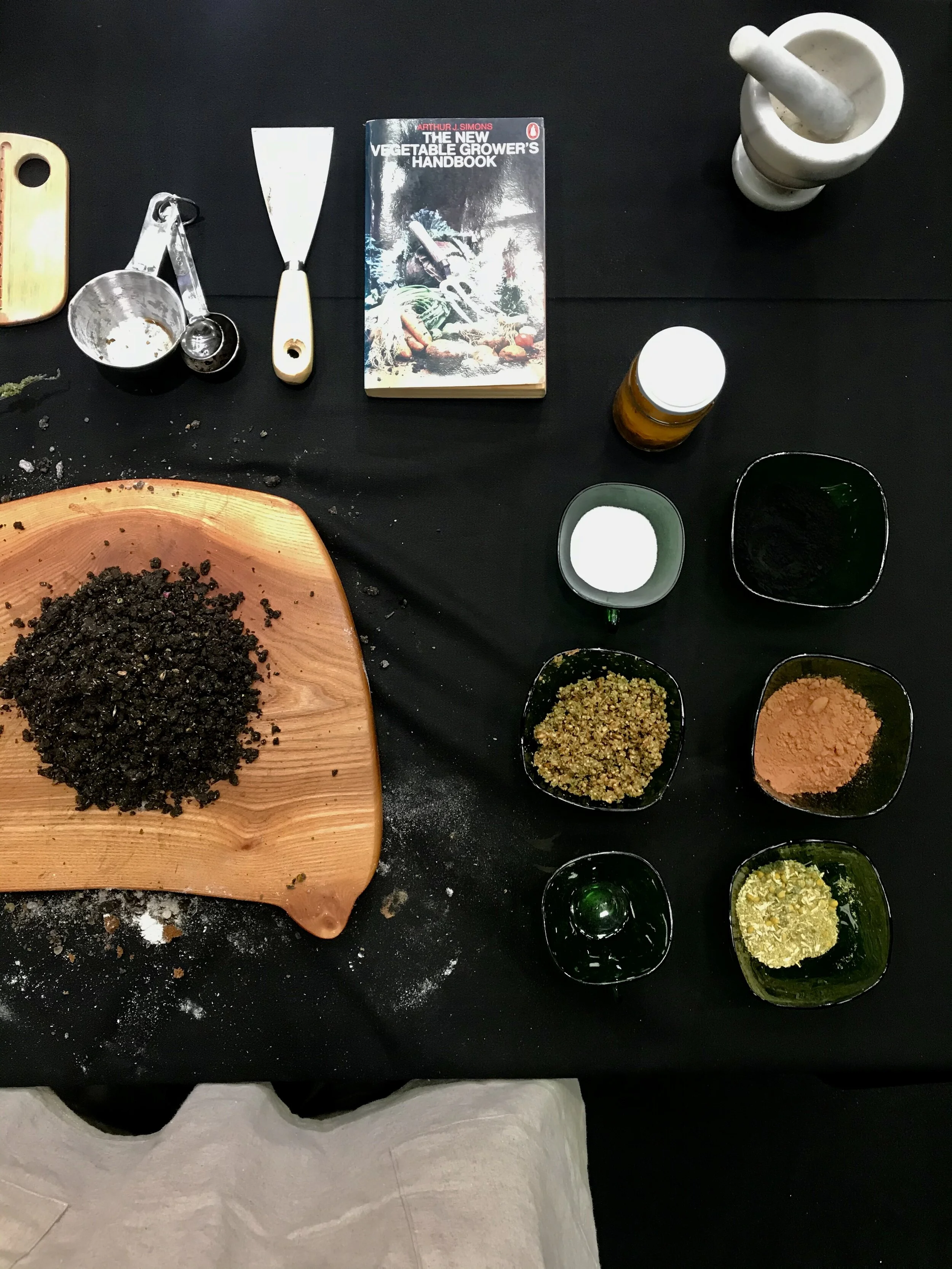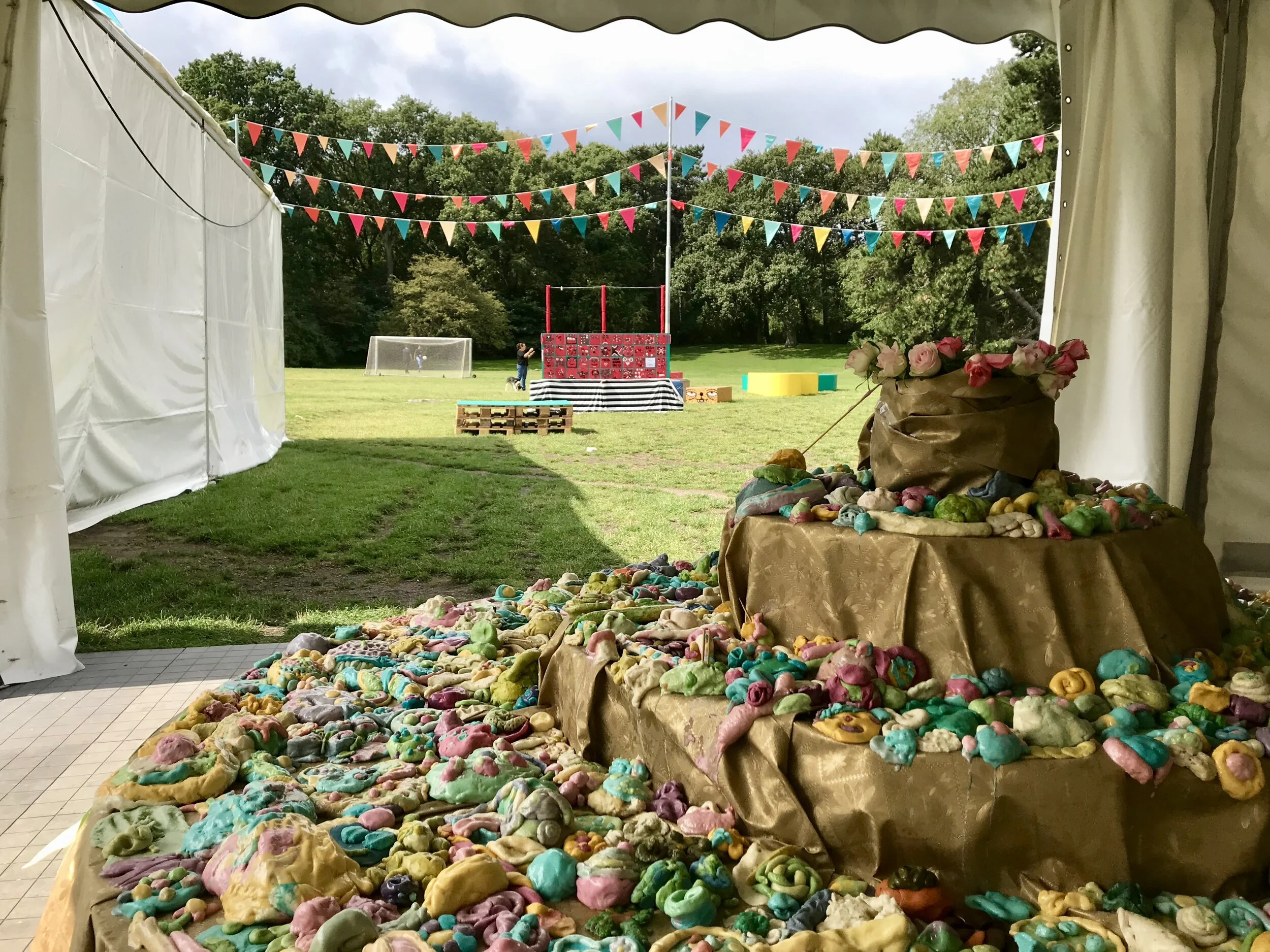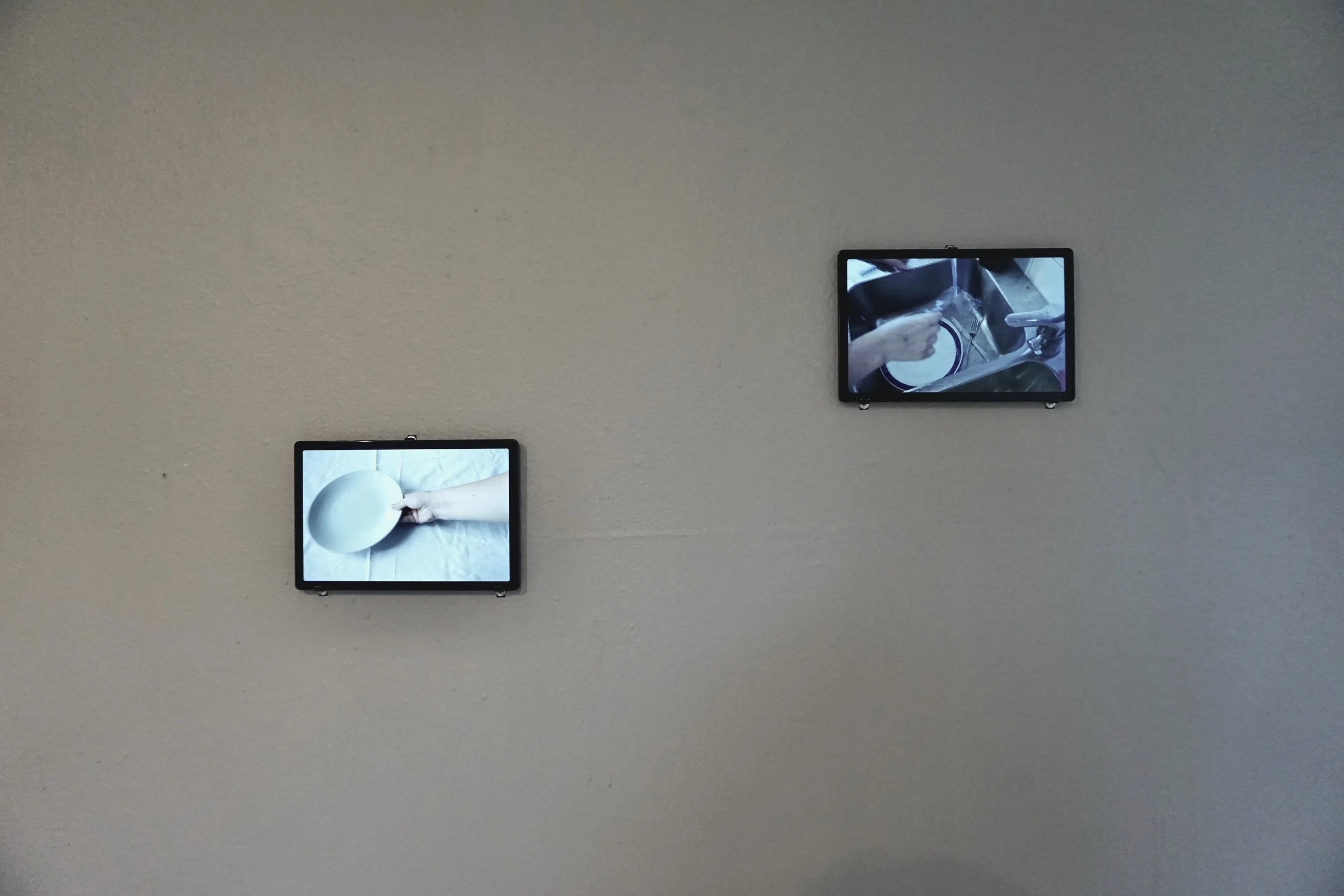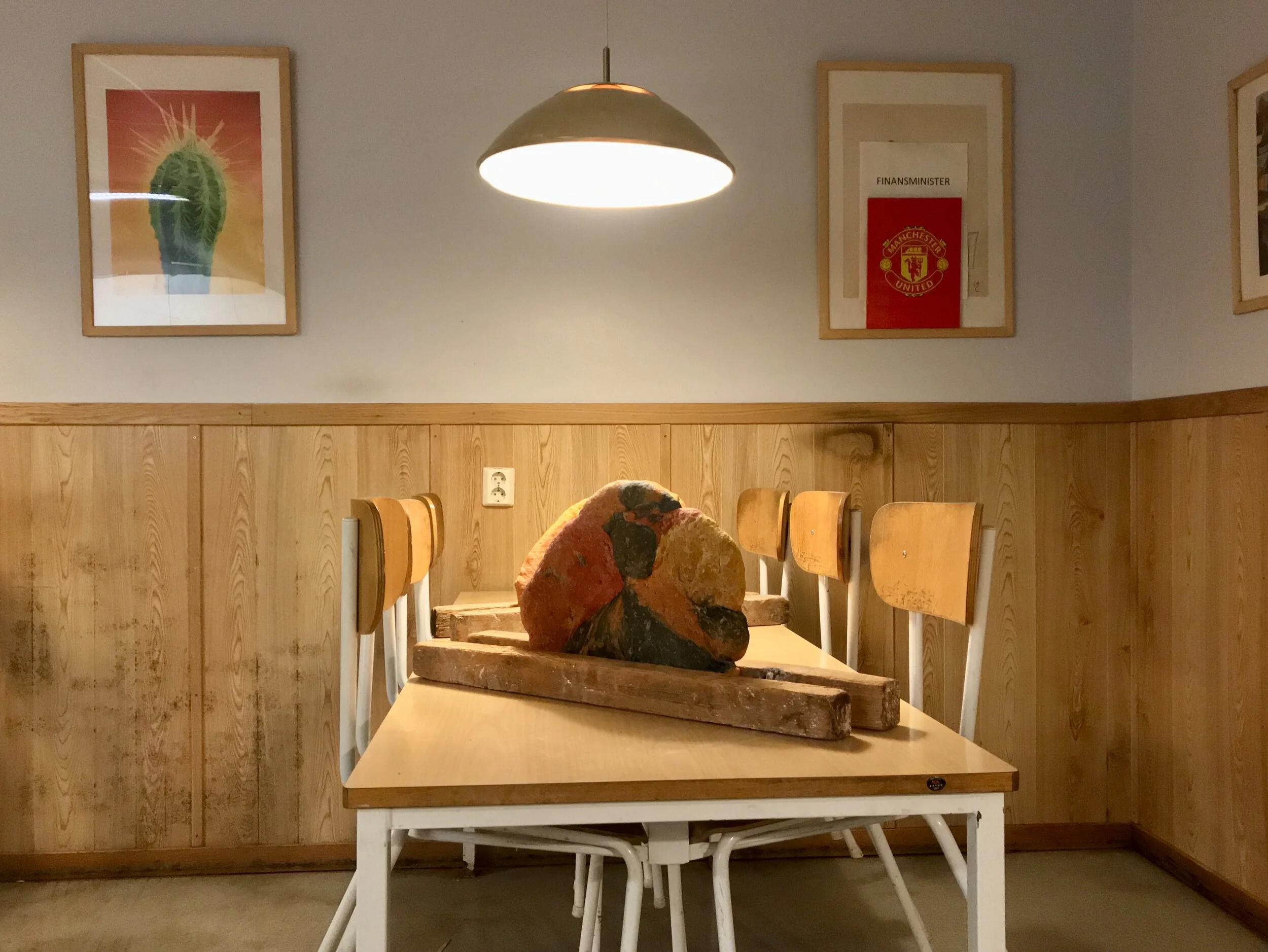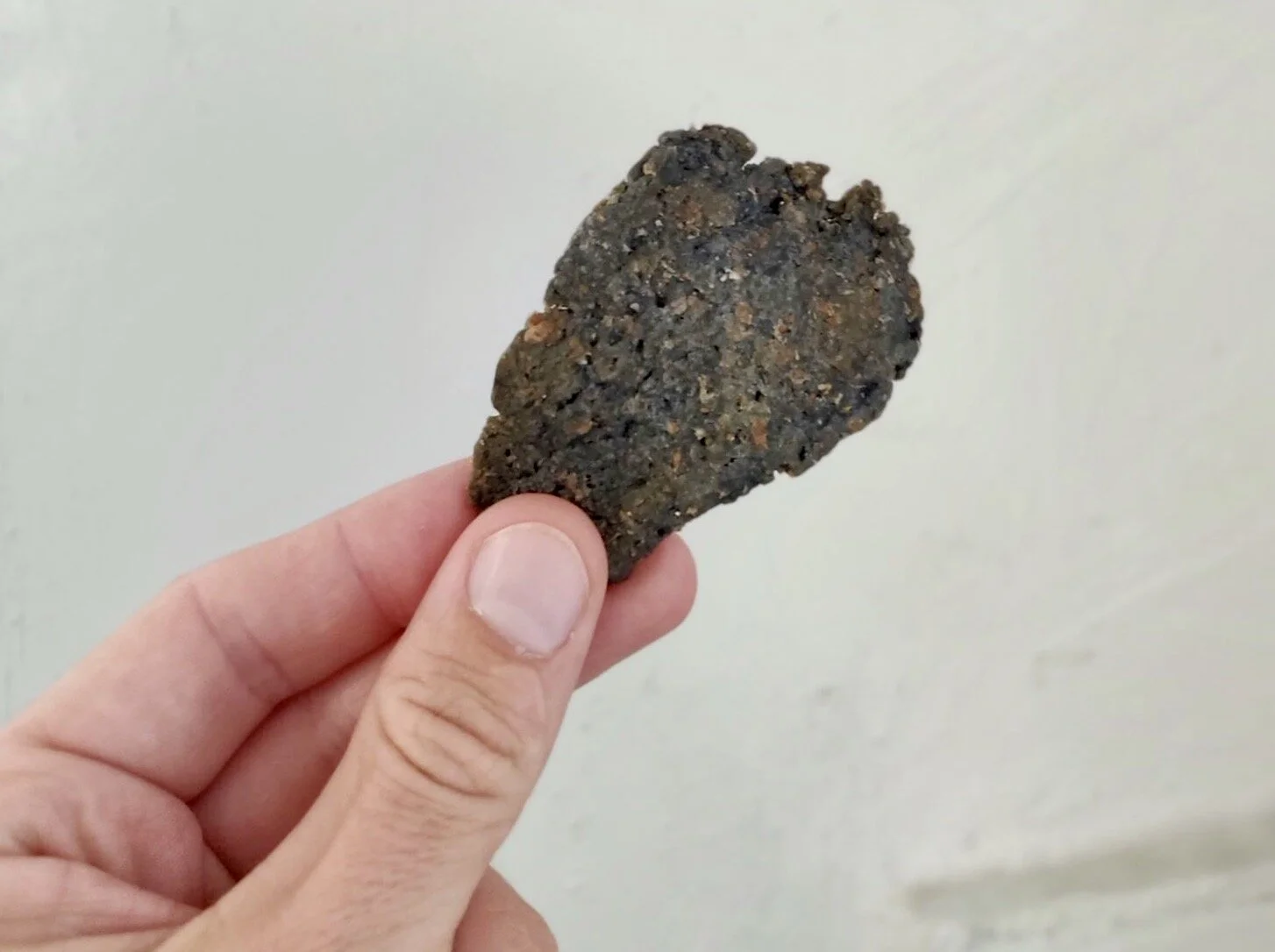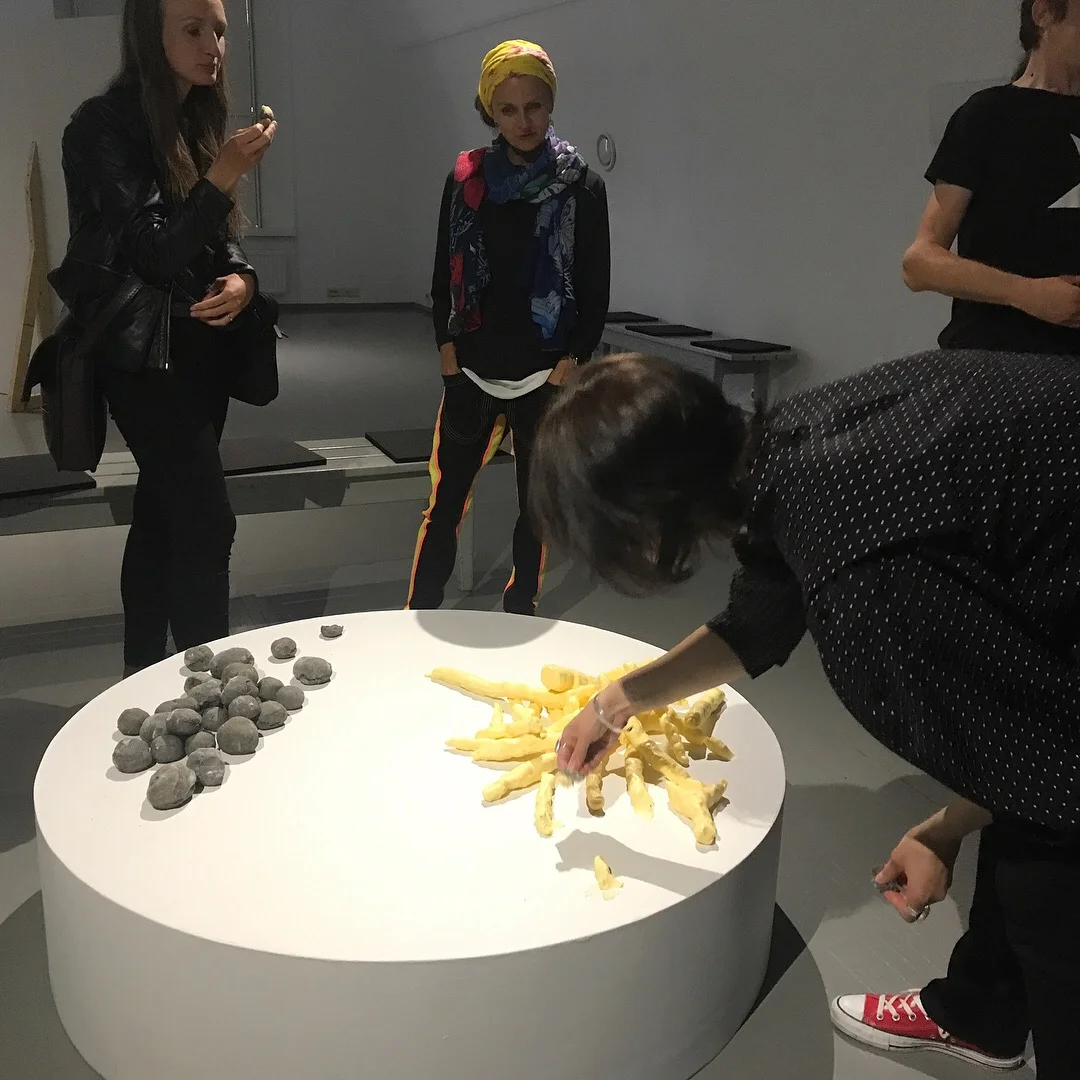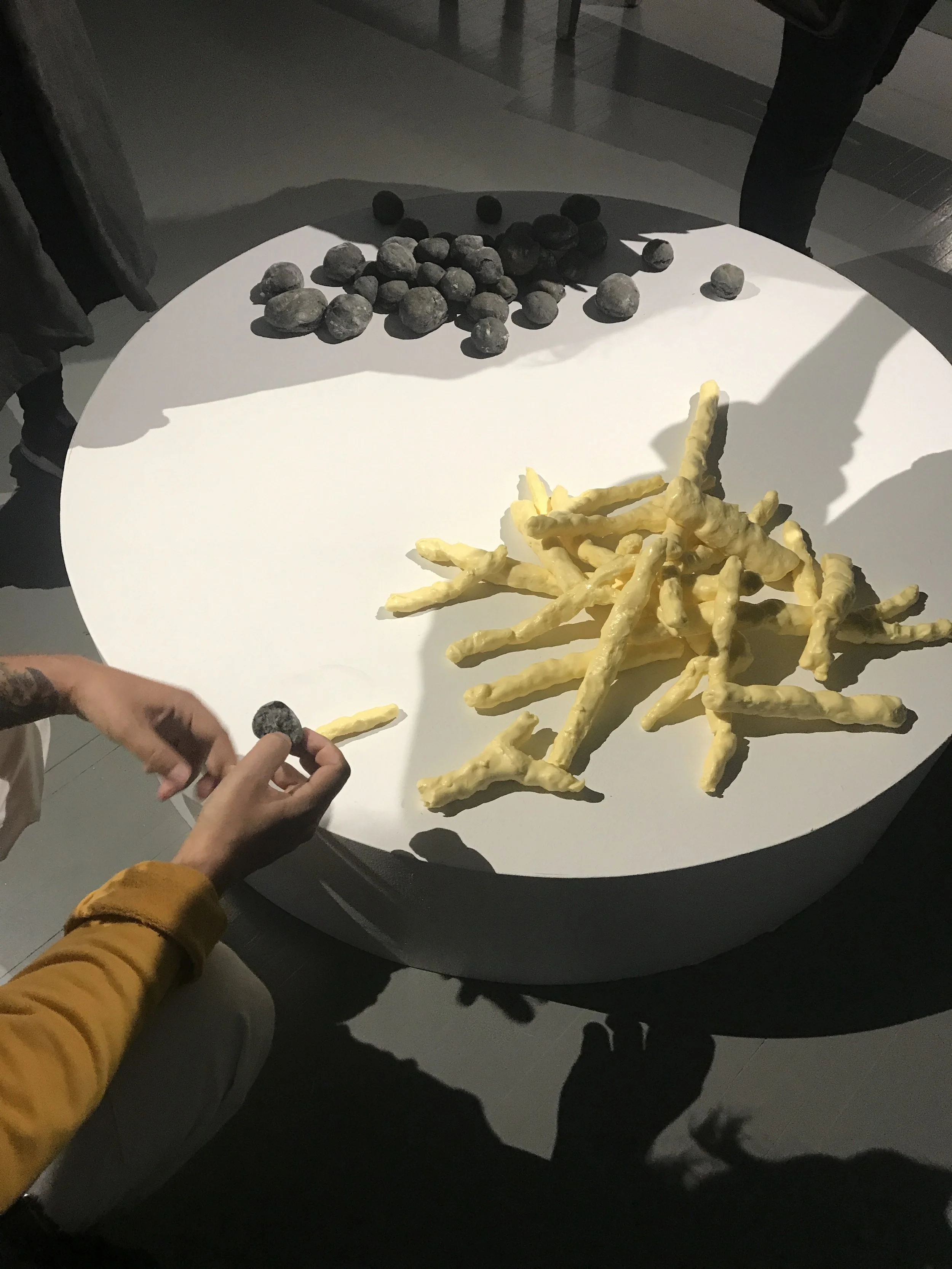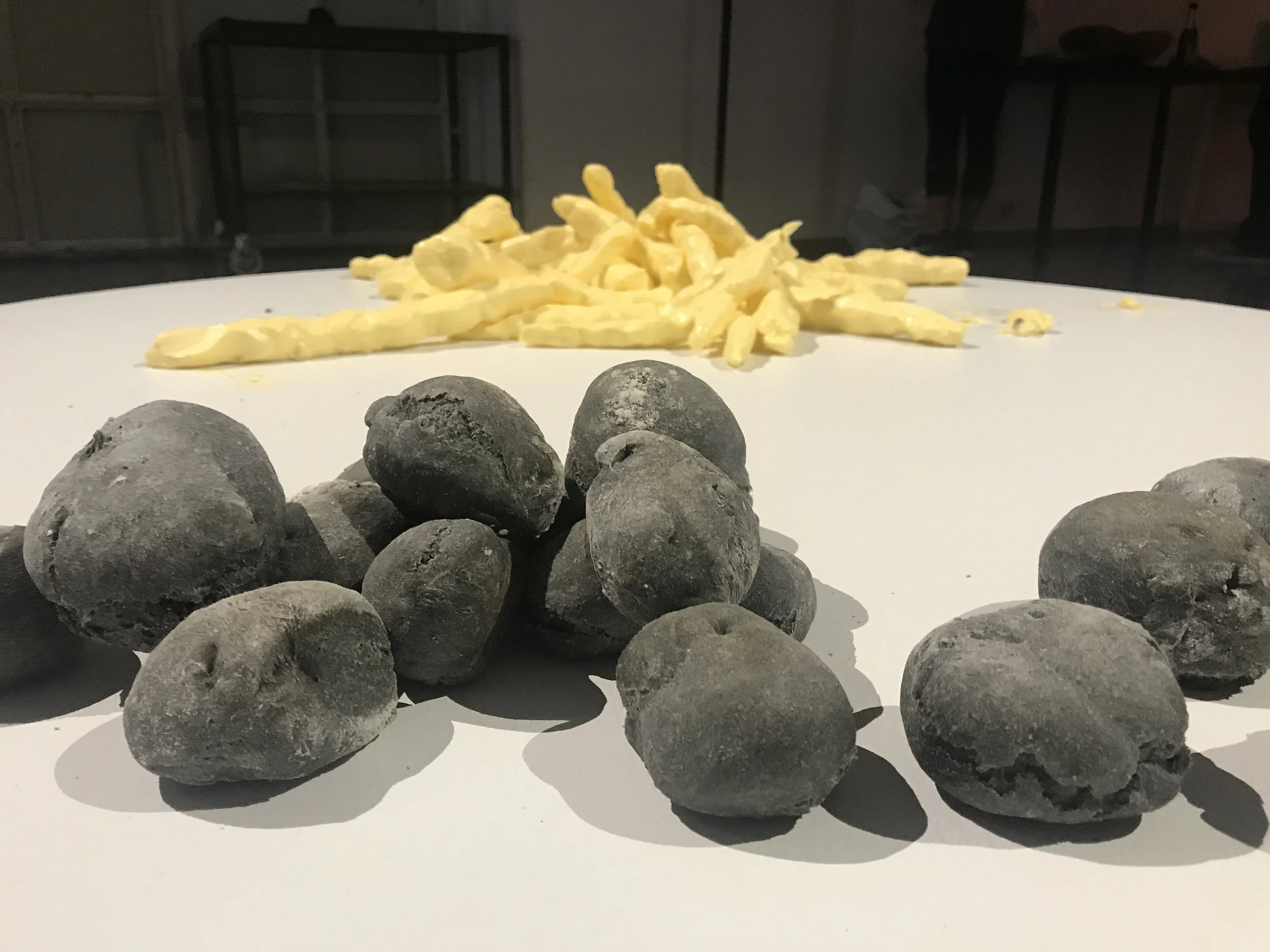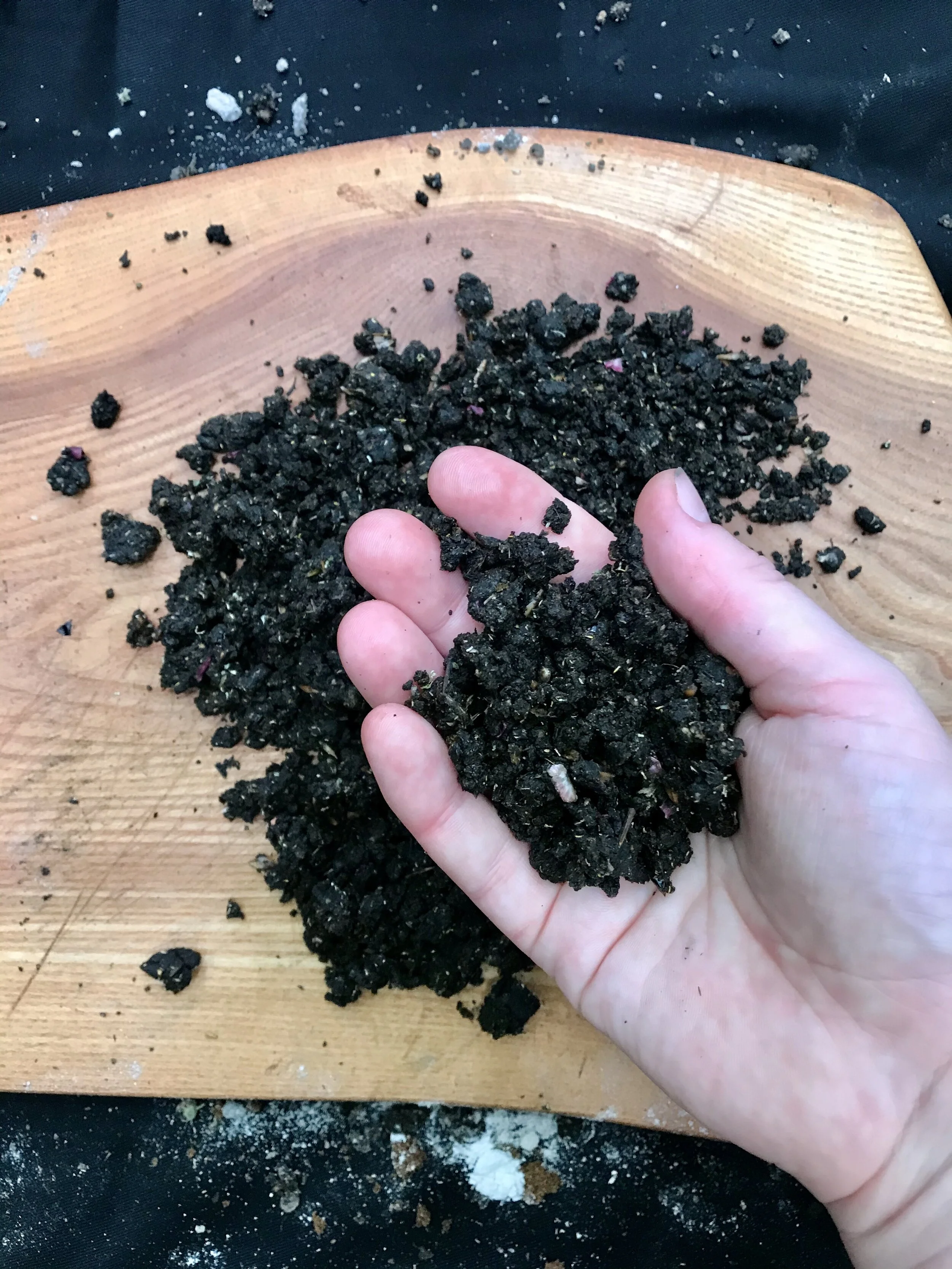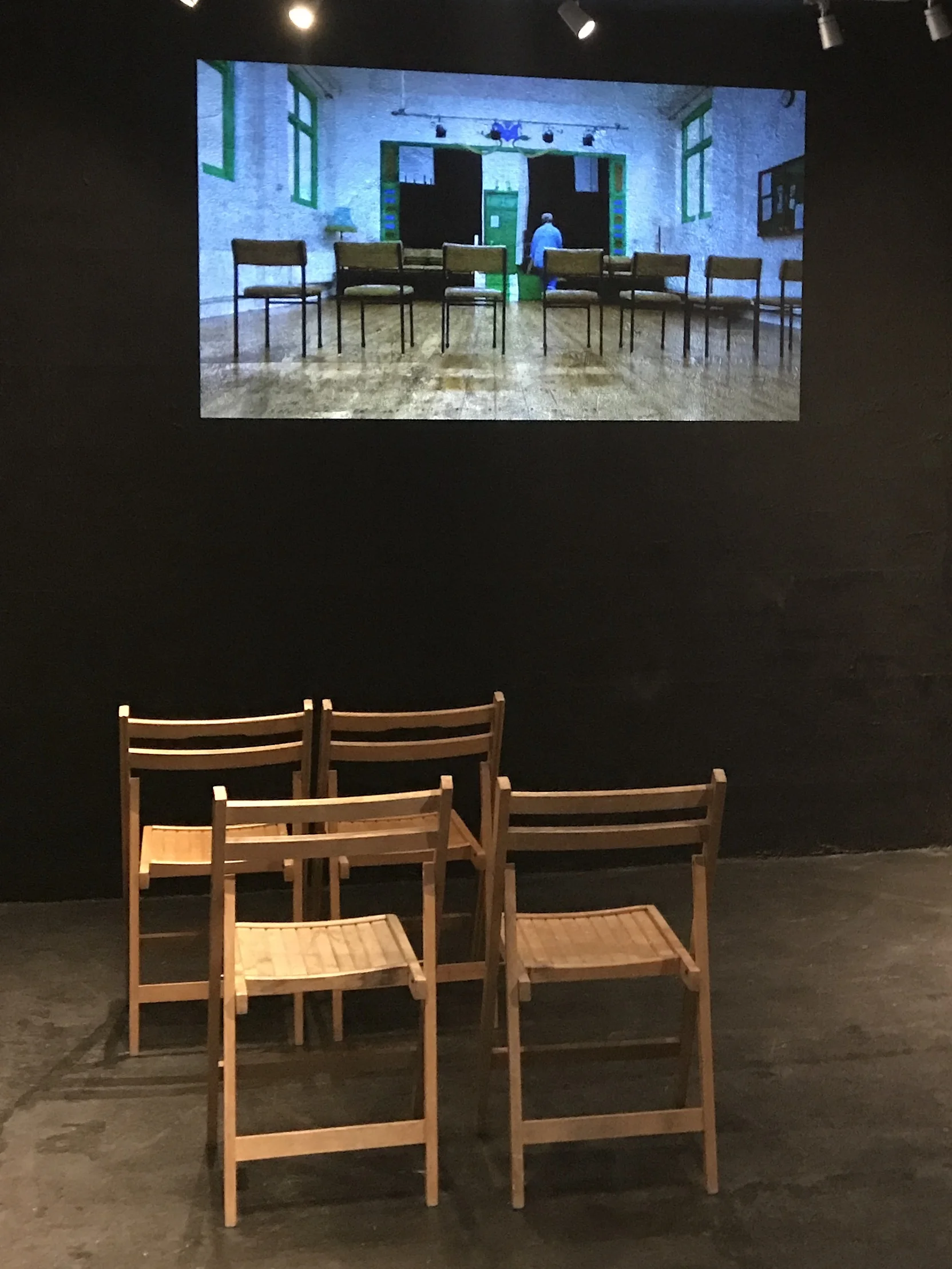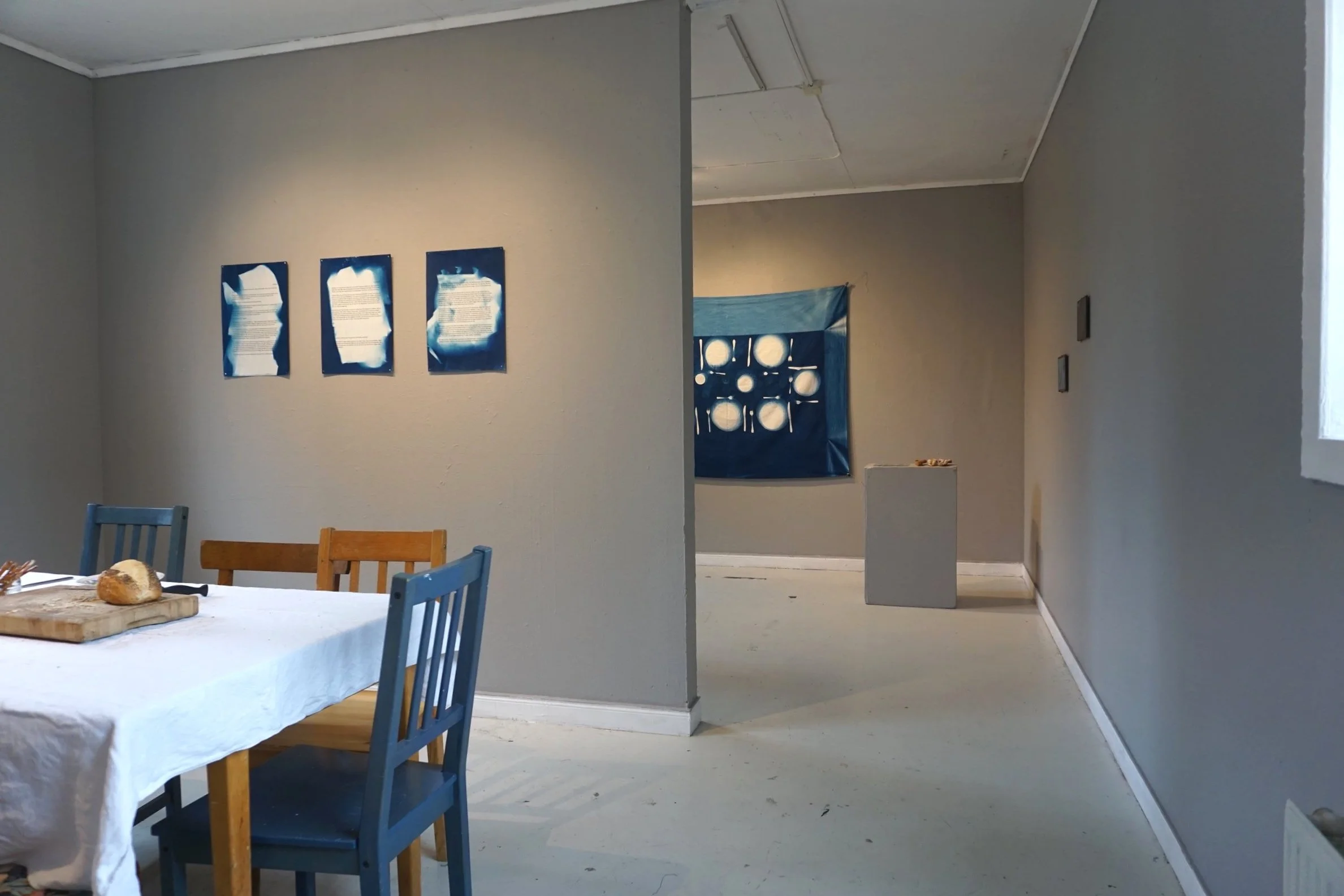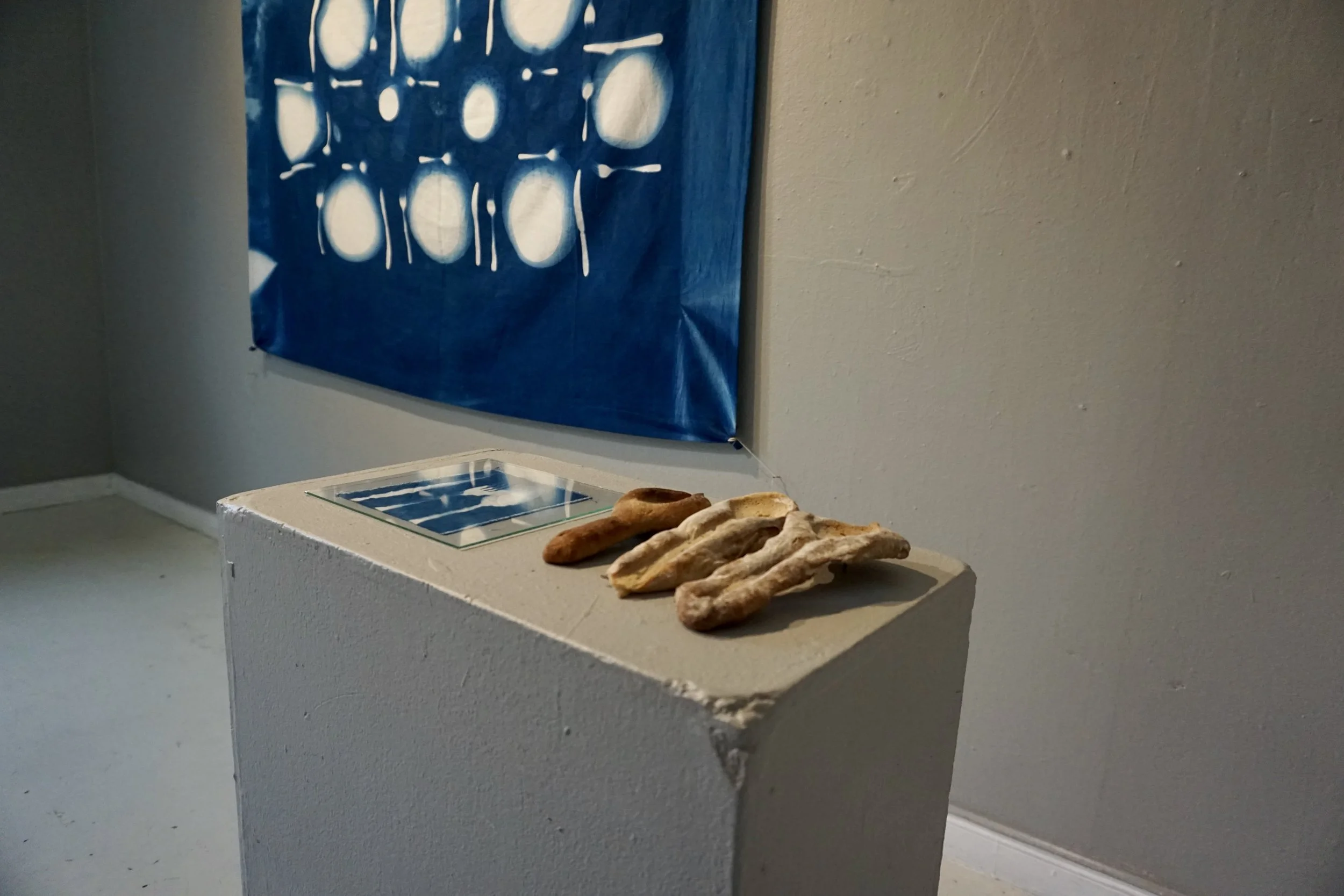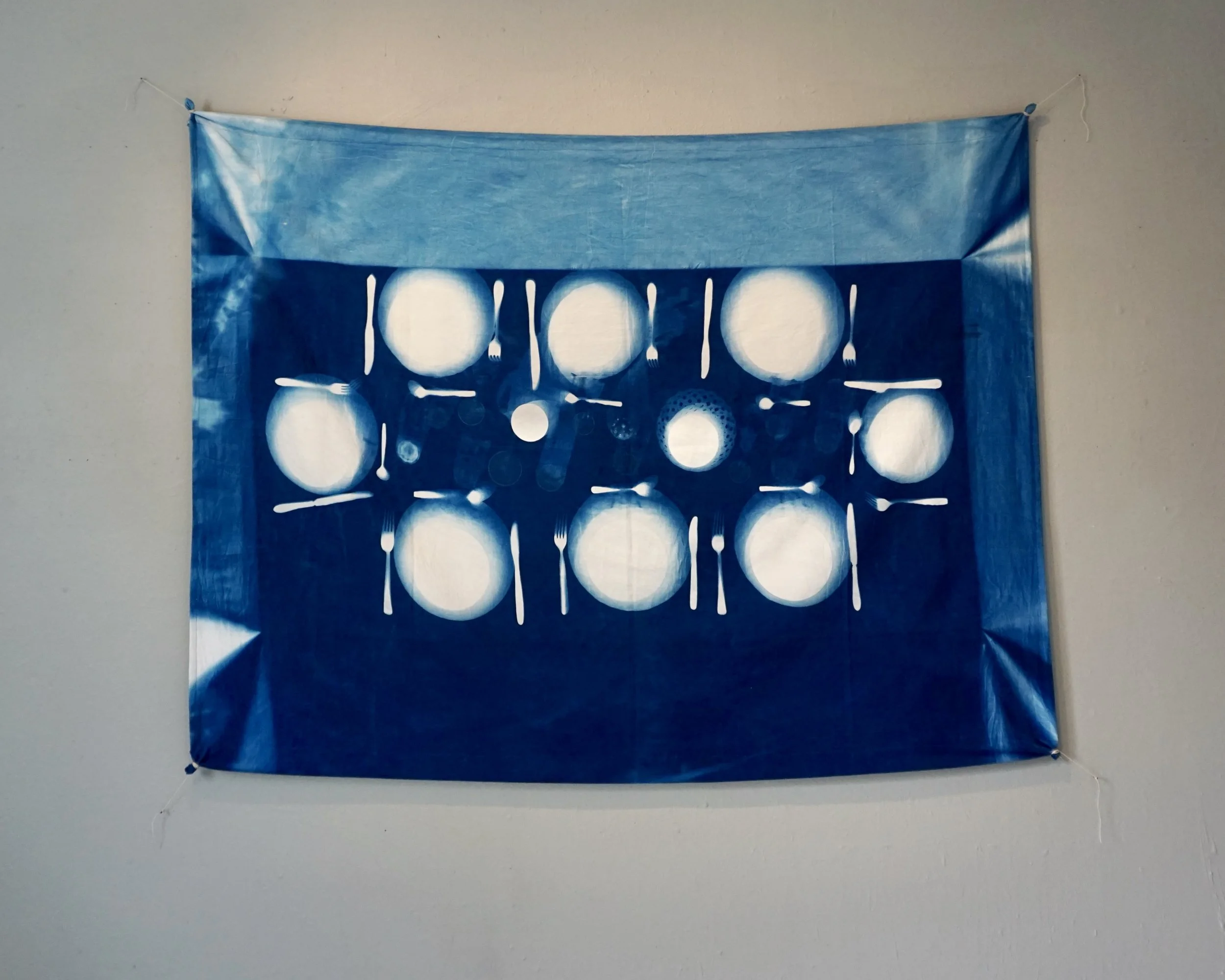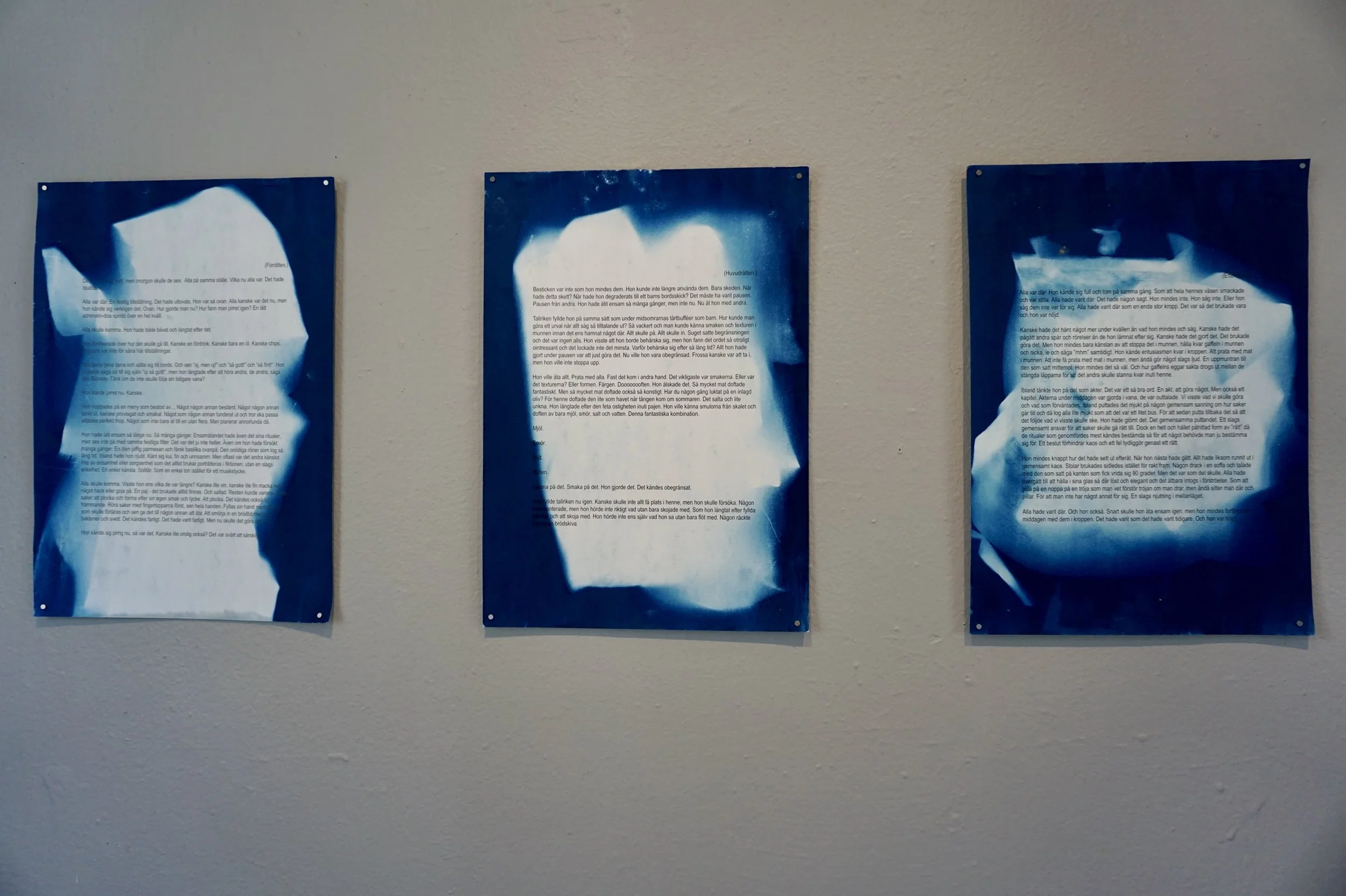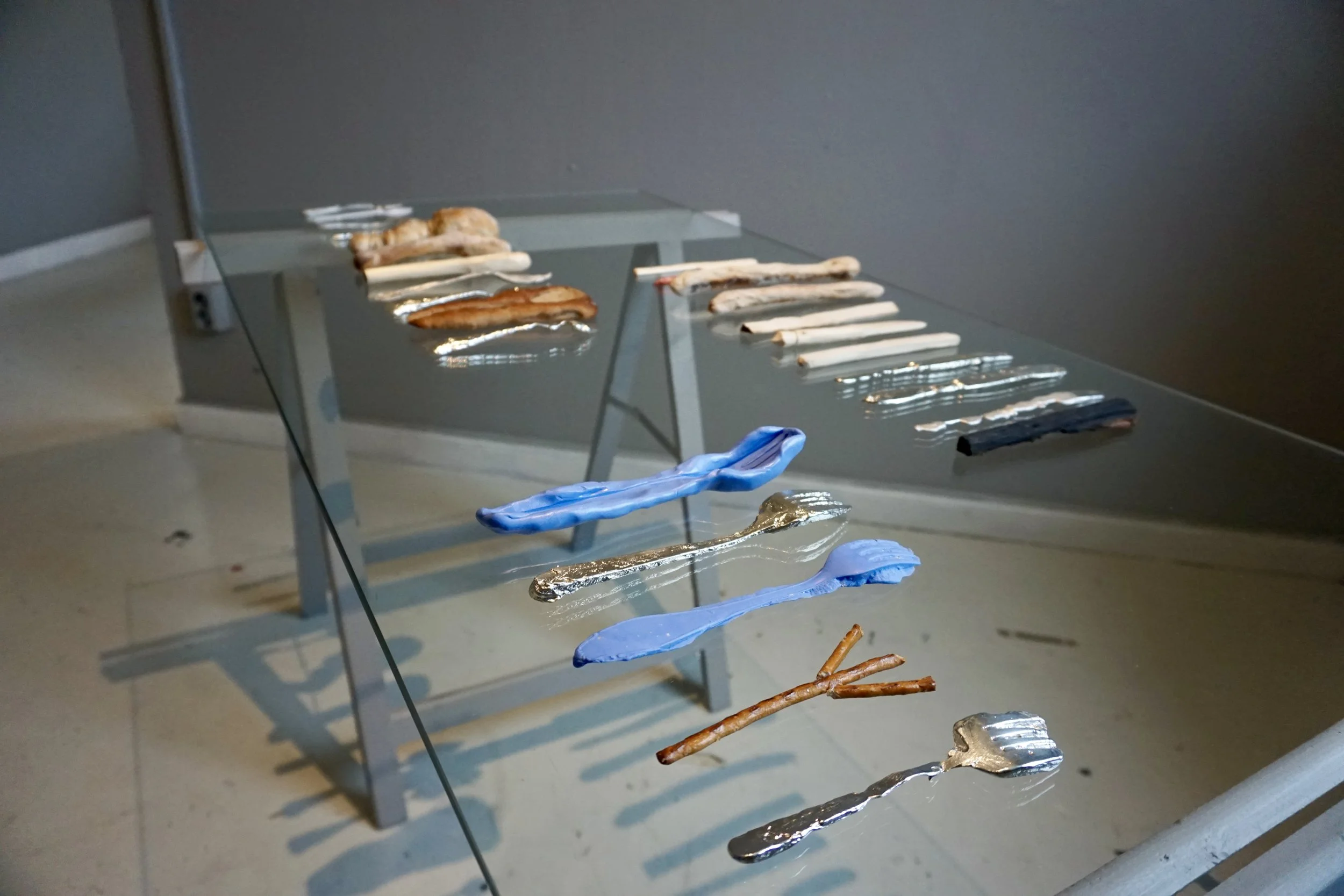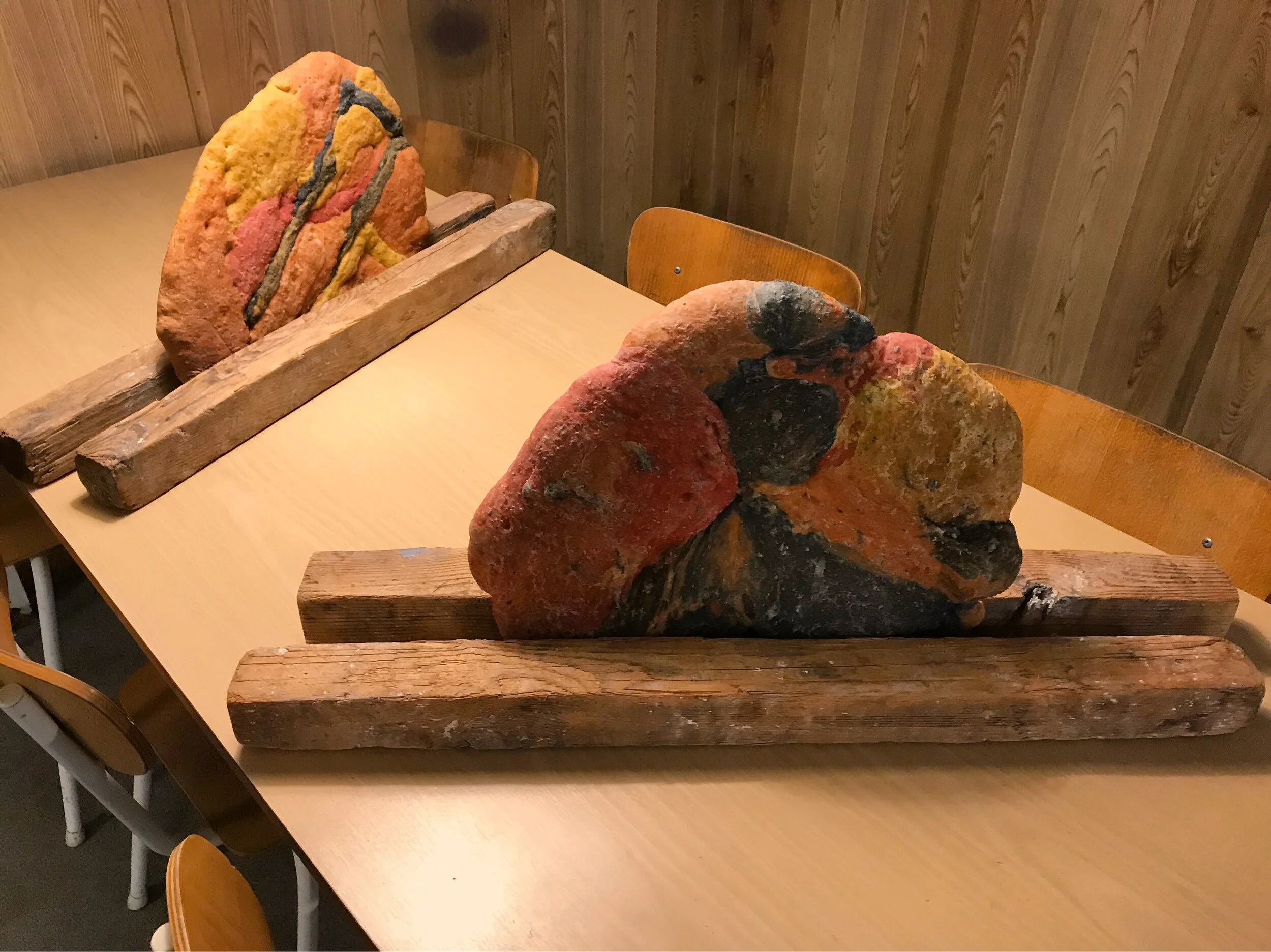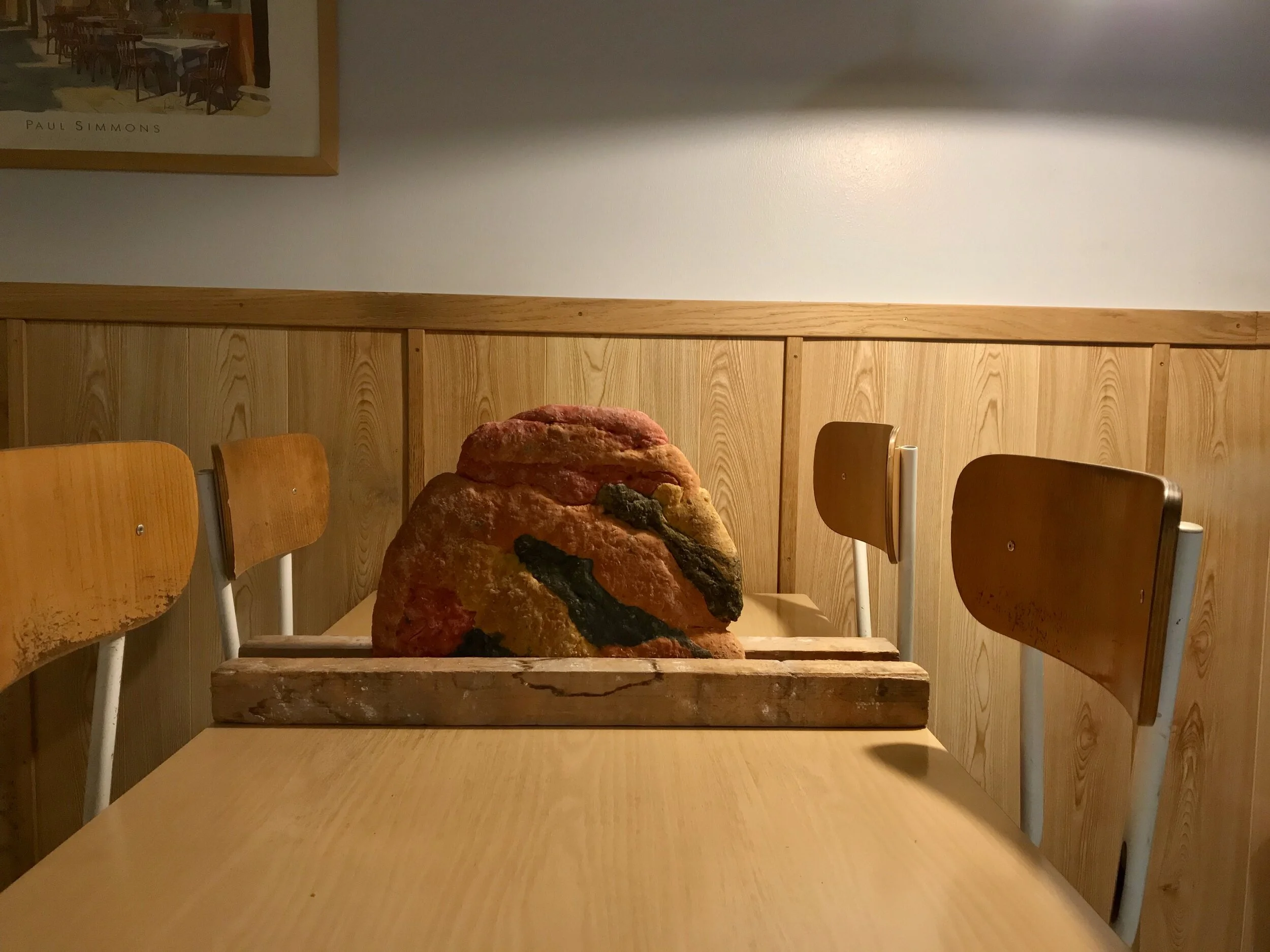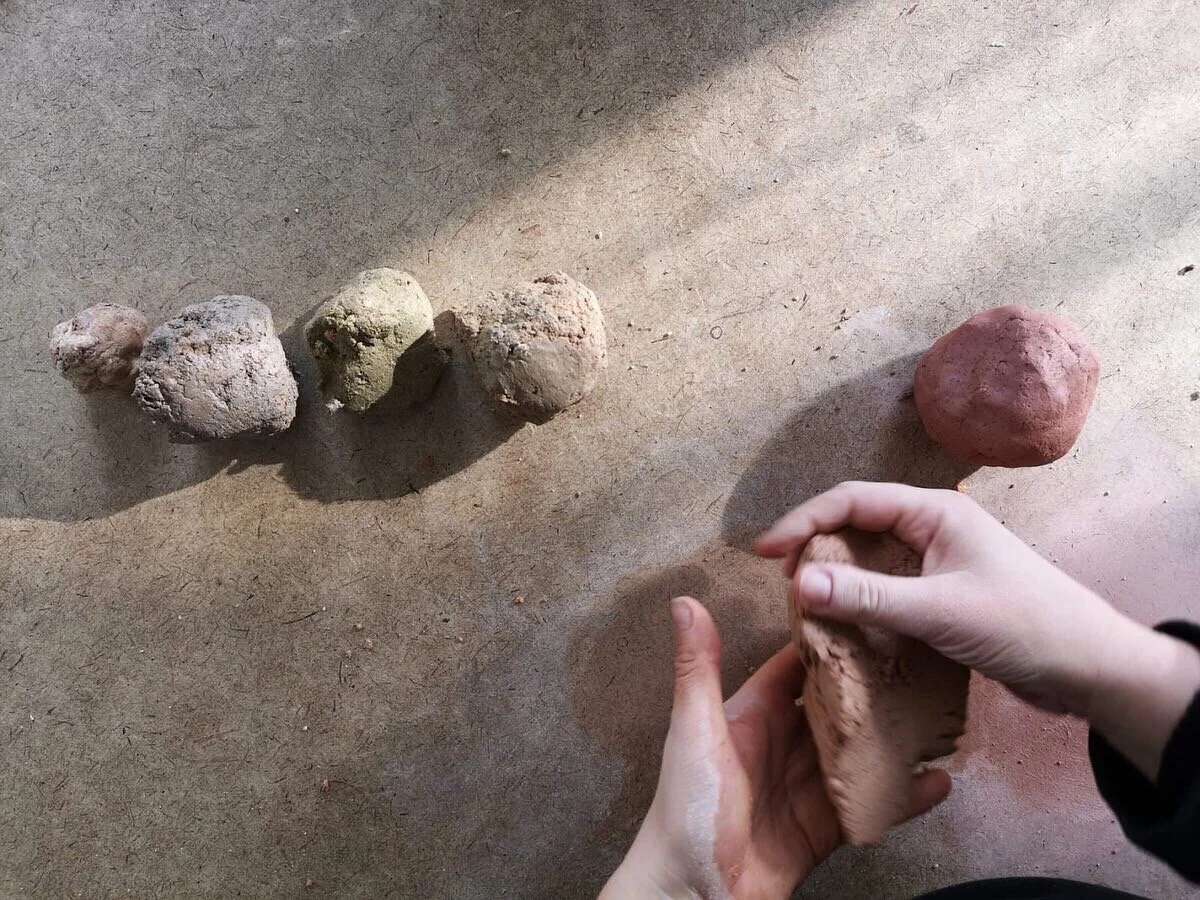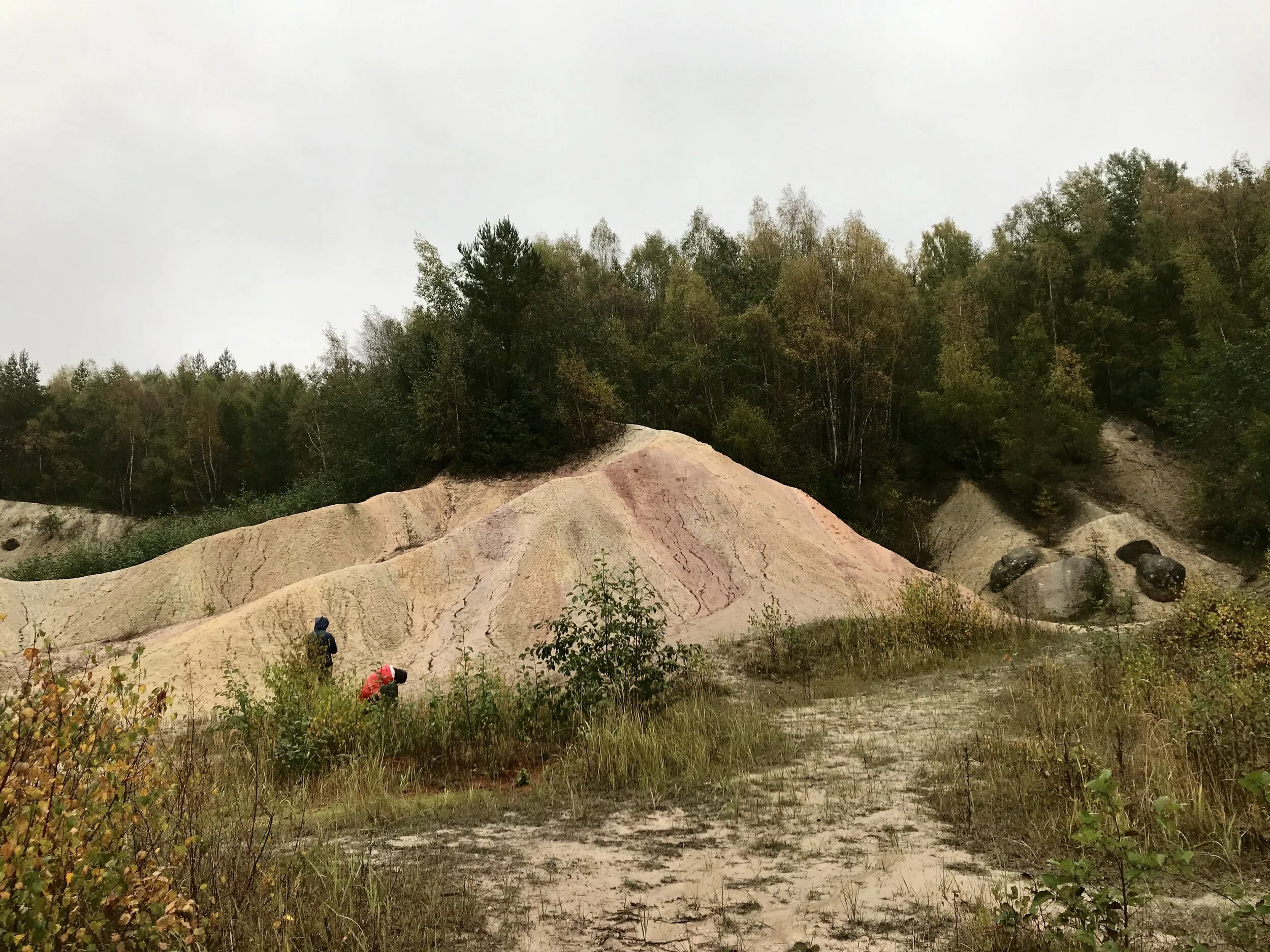During the first month of my stay at HIAP - Helsinki International Artist Programme I was asked to participate in an event named SABBAT:00, conspired by the curator Adwait Singh, hosted at the HIAP Gallery Augusta on June 29, 2018.
The churning of the butter, the kneading of the dough…
As I was exploring the processes of edible materials and their symbolic value during my stay at HIAP I decided to participate with a savoury work in progress to be ingested by the visitors. We watched the melting fires and touched the soft insides of rocks. Materials used followed a tradition of manual labour and following different stages to reach the height of its form to slowly melt away, harden and decay.
Material: wheat flour, fresh yeast, rapeseed oil, table salt, activated charcoal, butter.
About the event:
SABBAT : 00
conspired by: Adwait Singh
participating artists: Anni Puolakka, Louise Waite, Maarit Suomi-Väänänen, Matt Shilcock, Nestori Syrjälä, Petri Saarikko & Sasha Huber
*Dress Code : 'Back to Black' (basically anything black)
**[You could bring: apricots / peaches / plums / strawberries / cherries, raspberries / blueberries to munch]
--
'BLITZIBITION' NOTE
In her book Caliban and the Witch: Women, the Body, and Primitive Accumulation, Silvia Federici views the transition to capitalism as an apocalyptic counterrevolution that “required the transformation of the body into a work-machine, and the subjugation of women to the reproduction of the work-force. Most of all, it required the destruction of the power of women which, in Europe as in America, was achieved through the extermination of the ‘witches.’ [1] Similarly, works such as Arthur Evans’ Witchcraft and Gay Counterculture examine the ongoing ‘ecocides’ in the light of their precedents in institutionalized trials and witch hunts regimenting the ban on queer sensualities and alternate medical practices. Evans’ book presents a remarkable classed narrative of the systematic culling of paganism and its associative traits — ritual transvestism, open expression of sexuality, fertility rites etc., — with the organisational changes in society that became increasingly patriarchal and militaristic calling for progressively ascetic and repressive faiths. In the same breath it also recounts the survival of residual traces of these cultures and festivities underground well into the present times in the form of celebrations such as the Midsummer, the Night of All Souls (Halloween), and All Fools’ Day (April Fool’s Day). But perhaps most significantly, Evans highlights the thickening synonymity between religious heresy and sexual dissidence indicating that most witches that were persecuted during the Middle Ages were in fact queer men and women exhibiting signs of the old religion and ancient healing practices. Whilst these scholarships and ecofeminism at large have acquired their own critique primarily touching upon the problematic appropriation of ecological discourses by gynocratic paradigms, nevertheless, a parallel can be drawn between the systematic destruction of the power of women and queers through their construction as ‘witches’ that could be subsequently hunted and subjugated, and the gradual disenchantment and de-mystification of the landscape. Peter Gray of Scarlet Imprint summarizes this slow domestication neatly in his essay ‘Rewilding Witchcraft’:
Marching in lock-step with what used to be called mainstream, but is now mono- culture, we have disenchanted ourselves, handed over our teeth and claws and bristling luxuriant furs. [2]
Identifying witchcraft as a ‘quintessentially wild, ambivalent, ambiguous, queer’ force, often localised at the liminal zones such as ‘the hedge, the crossroads’, Gray champions it as a primordial force, historically allied to alterity, and one that can therefore act as a counterforce to neo-liberal schema. Subsequently, this 'blitzibition' explores the notion of the witch as a guardian summoned by the land; positioning them at the forefront of the war for the Great Mother, Gaiä. Conceived as a midsummer gathering of allies and conspirators ‘Sabbat: 00’ will mime the ancient song passed down to us along witchy lines of inheritance in a quest for forgotten wisdoms, remedies and manna with which to re-enchant ourselves, arm our politics, decolonize our praxis, sacralise the land, and reactivate the bond with the lost mother.
****
1 Silvia Federici, Caliban and the Witch: Women, the Body, and Primitive Accumulation (Brooklyn, NY: Autonomedia, 2004), pp. 63.
2 See Peter Gray, ‘Rewilding Witchcraft’ in Scalet Imprint (June 13, 2014) http://scarletimprint.com/2014/06/rewilding-witchcraft/





